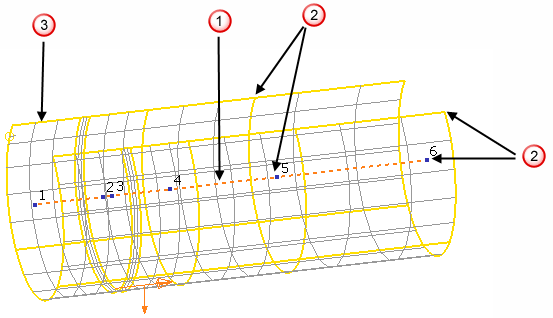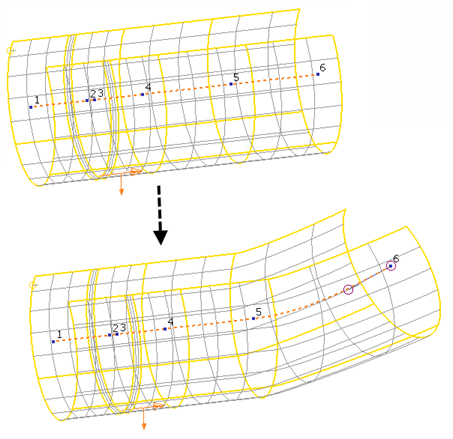A spine is a reference curve that may be used to define the overall shape of a surface.
The spine  is the reference line that determines where the data sections (laterals) are positioned in space. The spine is defined in terms of points. Every spine point must have an associated section
is the reference line that determines where the data sections (laterals) are positioned in space. The spine is defined in terms of points. Every spine point must have an associated section  and every section must have the same number of points. The section is orientated to lie in a plane at right angles to the tangent to the spine. Corresponding points on successive sections are linked by longitudinal lines
and every section must have the same number of points. The section is orientated to lie in a plane at right angles to the tangent to the spine. Corresponding points on successive sections are linked by longitudinal lines  to make up a network of curves. If you add a spine point, a new section is automatically created for it.
to make up a network of curves. If you add a spine point, a new section is automatically created for it.

Similarly, when you delete a spine point, the associated section is deleted too. More usefully, if the data at one or more spine points is modified, the orientation of the section relative to the spine is preserved.

While the spine is naturally the centre-line, it may be any convenient line inside, on, or outside the surface. The shape of the surface is easier to control if the spine is straight or two-dimensional, but this is not necessary. The sections and the spine may be open or closed, so that the surface may form an open region, a tube or a ring. The spine data should be chosen carefully to avoid unnecessary inflexions or concentrations of curvature.
In PowerShape a spine is generated automatically for the centre-line of a fillet surface, but otherwise is rarely used.